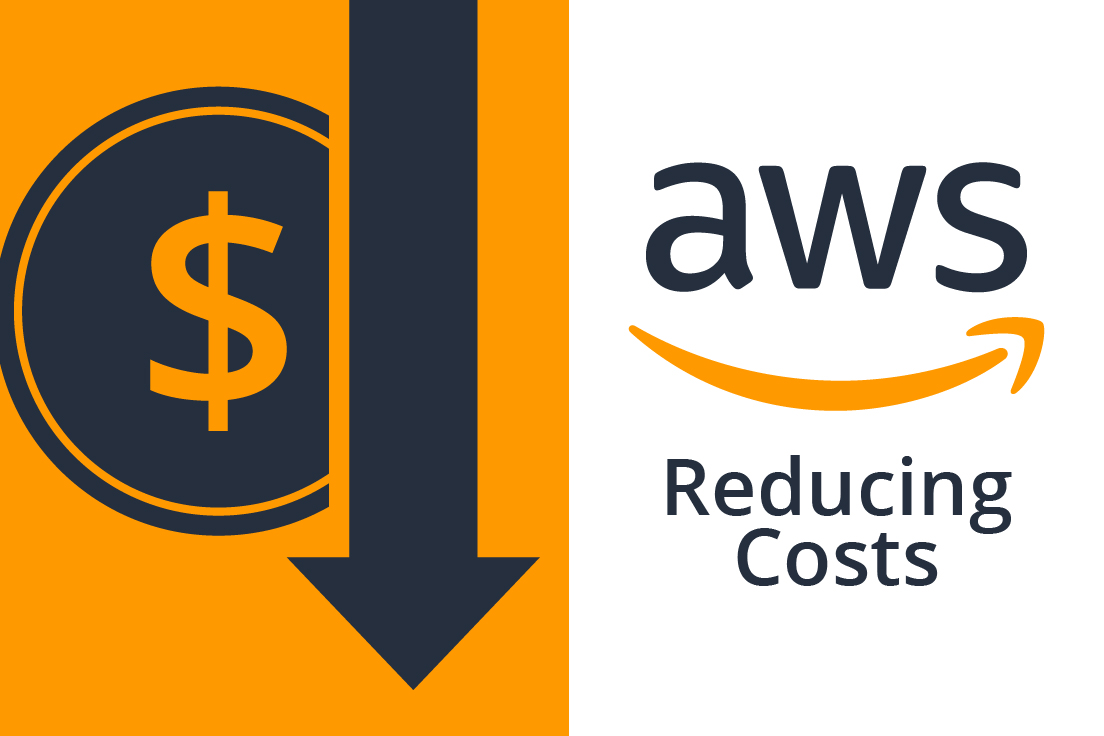Cost Optimization Strategies for Serverless Architectures
 Sanket Nimkar
Sanket Nimkar
Serverless architectures are becoming a popular choice due to their ability to scale easily and potentially reduce costs. Services like AWS Lambda, S3, and API Gateway offer a range of benefits, making it easier to manage applications and infrastructure. However, while serverless can often help cut costs, it’s not always as straightforward as it seems.
Many people assume that serverless will automatically be cheaper and can offer significant savings, it isn’t always a straightforward path to lower costs. Various factors influence the cost of serverless services, and hidden charges can surprise you if you're not careful. In this blog, we'll explore the cost optimization strategies for key AWS serverless services, highlight the factors influencing their pricing, and reveal the surprise charges that may affect your budget.
Disclaimer: The pricing provided in this blog is approximate and may not be up-to-date. Always refer to the official AWS pricing page for the most accurate and current pricing information.
AWS Lambda
Description:
AWS Lambda allows you to run code without providing or managing servers. You pay only for the compute time you consume. Probably popular choice for event-driven applications.
Factors Influencing Cost:
Memory Allocation: Higher memory settings increase costs.
Execution Duration: Longer execution times lead to higher charges.
Number of Requests: More invocations mean higher costs.
Pricing:
Memory: $0.00001667 per GB-second.
Requests: $0.20 per 1 million requests.
Cost Optimization Strategies:
Right size Function Memory: Adjust memory allocation to match your function’s needs. For example, reducing memory from 512 MB to 256 MB can save approximately $0.10 per million requests.
Optimize Function Duration: Improve your code to reduce execution time. Reducing execution time from 200 ms to 100 ms for a function using 256 MB memory can save $0.01667 per million invocations.
Use Provisioned Concurrency Wisely: Configure provisioned concurrency only for predictable traffic patterns to avoid unnecessary costs.
Surprise Charges:
Cold Start Latency: Functions with infrequent invocations can impact additional latency costs.
Data Transfer: Charges for data transferred between Lambda and other AWS services or the internet.
AWS S3
Description:
Amazon S3 is a scalable object storage service that provides secure, durable, and low latency storage for data.
Factors Influencing Cost:
Storage Class: Different storage classes have different pricing (e.g., S3 Standard vs. S3 Infrequent Access).
Data Stored: The total amount of data you store affects your costs.
API Requests: Charges apply for PUT, COPY, POST, or LIST requests.
Pricing:
S3 Standard: $0.025 per GB.
Requests: $0.005 per 1,000 PUT, COPY, POST, or LIST requests.
Cost Optimization Strategies:
Choose the Right Storage Class: Use S3 Intelligent-Tiering or lifecycle policies to move data to more cost-effective storage classes. Moving 1 TB of data to S3 Infrequent Access can save around $19 per month.
Use Object Compression: Compress data before storing to reduce storage costs. Compressing 1 TB of data by 50% saves about $11.50 per month.
Monitor and Clean Up Unused Data: Regularly delete unnecessary data. Removing 500 GB of unused data can save approximately $11.50 per month.
Surprise Charges:
Data Transfer Costs: Charges for data transferred out of S3 to other AWS services or the internet.
Request Charges: Additional costs for high volumes of API requests.
Amazon API Gateway
Description:
Amazon API Gateway enables you to create, publish, maintain, monitor, and secure APIs at any scale.
Factors Influencing Cost:
Type of API: REST API vs. HTTP API.
Number of Requests: Total number of API requests.
Caching: Use of caching for API responses.
Pricing:
REST APIs: $3.50 per million requests.
HTTP APIs: $1.00 per million requests.
Cost Optimization Strategies:
Choose HTTP APIs over REST APIs: HTTP APIs generally cost less. Handling 100 million requests per month with HTTP APIs can save $250 compared to REST APIs.
Enable Caching: Implement caching to reduce backend service calls. Caching can cut backend calls by up to 50%, potentially saving $1,000 per month.
Consolidate API Calls: Combine multiple requests into a single call to lower API usage. Reducing API calls by 20% for 50 million requests can save about $3,500.
Surprise Charges:
Data Transfer: Costs for data transferred between API Gateway and other AWS services or the internet.
Custom Domain Names: Additional costs for using custom domains with API Gateway.
AWS Kinesis Data Streams
Description:
AWS Kinesis Data Streams lets you collect and process real-time data streams at scale.
Factors Influencing Cost:
Number of Shards: The number of shards determines the throughput capacity. (Kinesis Architecture)
PUT Payload Units: The number of payload units for data ingestion.
Data Retention: Duration for which data is retained in the stream.
Pricing
Shards: $0.015 per shard hour.
PUT Payload Units: $0.014 per million units.
Cost Optimization Strategies:
Optimize Shard Usage: Adjust shard count based on actual throughput needs. Reducing shard count from 10 to 5 can save $108 per month.
Batch Records: Aggregate multiple records into a single PUT payload to reduce costs. Reducing PUT payload units by 25% for 100 million records can save $1,400 per month.
Enable Auto Scaling: Use Kinesis Data Streams On-Demand to automatically scale based on traffic.
Surprise Charges:
Extended Data Retention: Additional costs for retaining data beyond the default 24-hour period.
Enhanced Fan-Out: Higher costs for dedicated throughput for data consumers.
AWS Athena
Description:
AWS Athena is an interactive query service that lets you analyze data directly in Amazon S3 using SQL.
Factors Influencing Cost:
Data Scanned: The amount of data scanned by queries.
Data Formats: Different data formats (e.g., JSON vs. Parquet) affect the amount of data scanned.
Partitioning: How data is partitioned affects query efficiency.
Pricing:
Data Scanned: $5.00 per TB.
Cost Optimization Strategies:
Optimize Data Formats: Use columnar formats like Parquet to reduce the amount of data scanned. Converting 1 TB of JSON data to Parquet might reduce scanned data to 200 GB, saving $4.00 per query.
Partition Your Data: Partition data to lower the amount of data scanned in queries. Effective partitioning can cut query costs by up to 50%.
Use Compressed Data: Compress data to reduce both storage and query costs.
Surprise Charges:
Data Transfer: Charges for transferring query results to other regions.
Query Costs: Inefficient queries that scan more data than necessary can increase costs.
AWS Glue
Description:
AWS Glue is a fully managed ETL (extract, transform, load) service that makes it easy to prepare and load data for analytics.
Factors Influencing Cost:
DPU Hours: The number of Data Processing Units (DPUs) used for ETL jobs.
Data Catalog Objects: The number of objects stored and accessed in the Data Catalog.
Crawler Duration: The duration of crawler runs.
Pricing:
DPU Hours: $0.44 per DPU-hour.
Data Catalog Storage: $1.00 per 100,000 objects per month.
Data Catalog Requests: $1.00 per million requests.
Cost Optimization Strategies:
Optimize DPU Usage: Scale DPUs based on job complexity. Reducing DPU usage by 2 hours daily can save approximately $26.40 per month.
Efficient Crawler Scheduling: Run crawlers during off-peak hours or only when necessary. Reducing crawler runtime by half saves about $0.29 per week, or $1.16 per month.
Leverage Auto Scaling: Use auto-scaling to adjust DPU usage based on workload, potentially saving up to 20% in DPU costs.
Surprise Charges:
Crawler Duration: Costs associated with the runtime of crawlers.
Data Catalog Costs: Additional costs for storing and accessing metadata.
Reducing Data Transfer Charges
Data transfer charges can be a significant part of your AWS bill, especially when moving data between services or to the internet.
Cost Optimization Strategies:
Use Same Region for All Services: Minimize inter-region data transfer costs by keeping services in the same region. This can save up to $0.09 per GB for inter-region transfers.
Monitor Data Transfer Costs: Utilize AWS Cost Explorer to track and manage data transfer expenses.
Amazon CloudFront: Use CloudFront to cache and distribute content, potentially reducing data transfer charges by up to 50%.
Optimize Data Transfer with Compression: Compress data to reduce the amount of data transferred, thereby lowering costs.
Summary
Serverless architectures offer benefits like automatic scaling, reduced operational overhead, and pay-as-you-go pricing. However, managing costs effectively is crucial. AWS services such as Lambda, S3, API Gateway, Kinesis, Athena, and Glue provide powerful tools, but their costs can vary based on specific usage patterns and configurations.
AWS Lambda: Optimize memory allocation and execution duration.
Amazon S3: Choose the right storage class and compress data.
API Gateway: Use HTTP APIs over REST APIs and enable caching.
Kinesis Data Streams: Adjust shard usage and batch records to minimize costs.
Athena: Optimize data formats and partition data.
Glue: Scale DPUs and optimize crawler schedules to save on ETL jobs.
Data transfer charges can also add up. Keep services in the same region, use CloudFront, and compress data to manage these costs.
By understanding the factors influencing costs and potential hidden charges, you can implement effective strategies to optimize your serverless architecture expenses. Always check the official AWS pricing pages for the latest rates and monitor your usage to stay within budget.
Subscribe to my newsletter
Read articles from Sanket Nimkar directly inside your inbox. Subscribe to the newsletter, and don't miss out.
Written by
